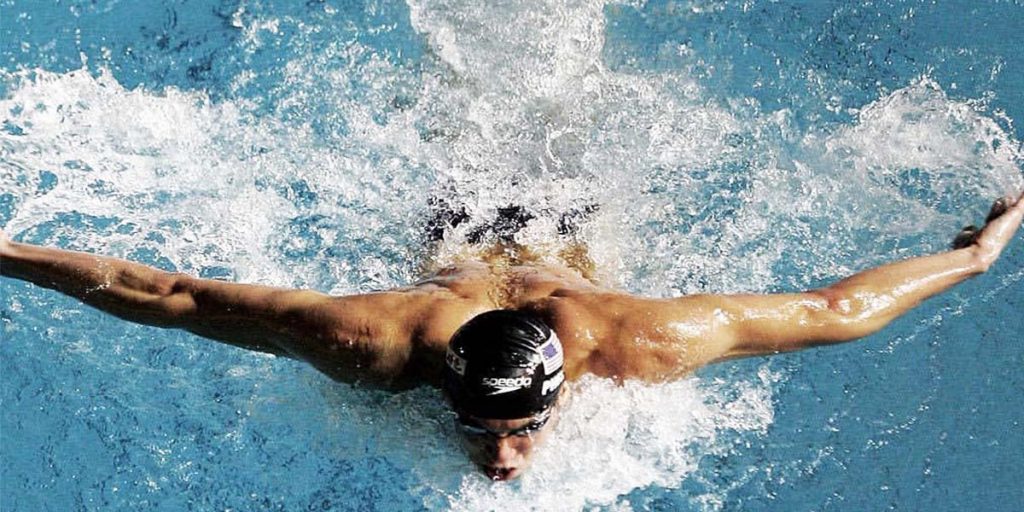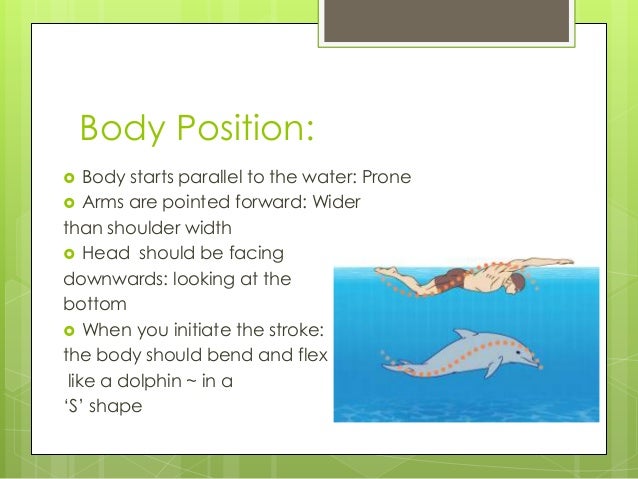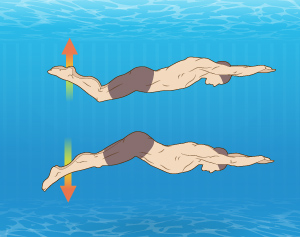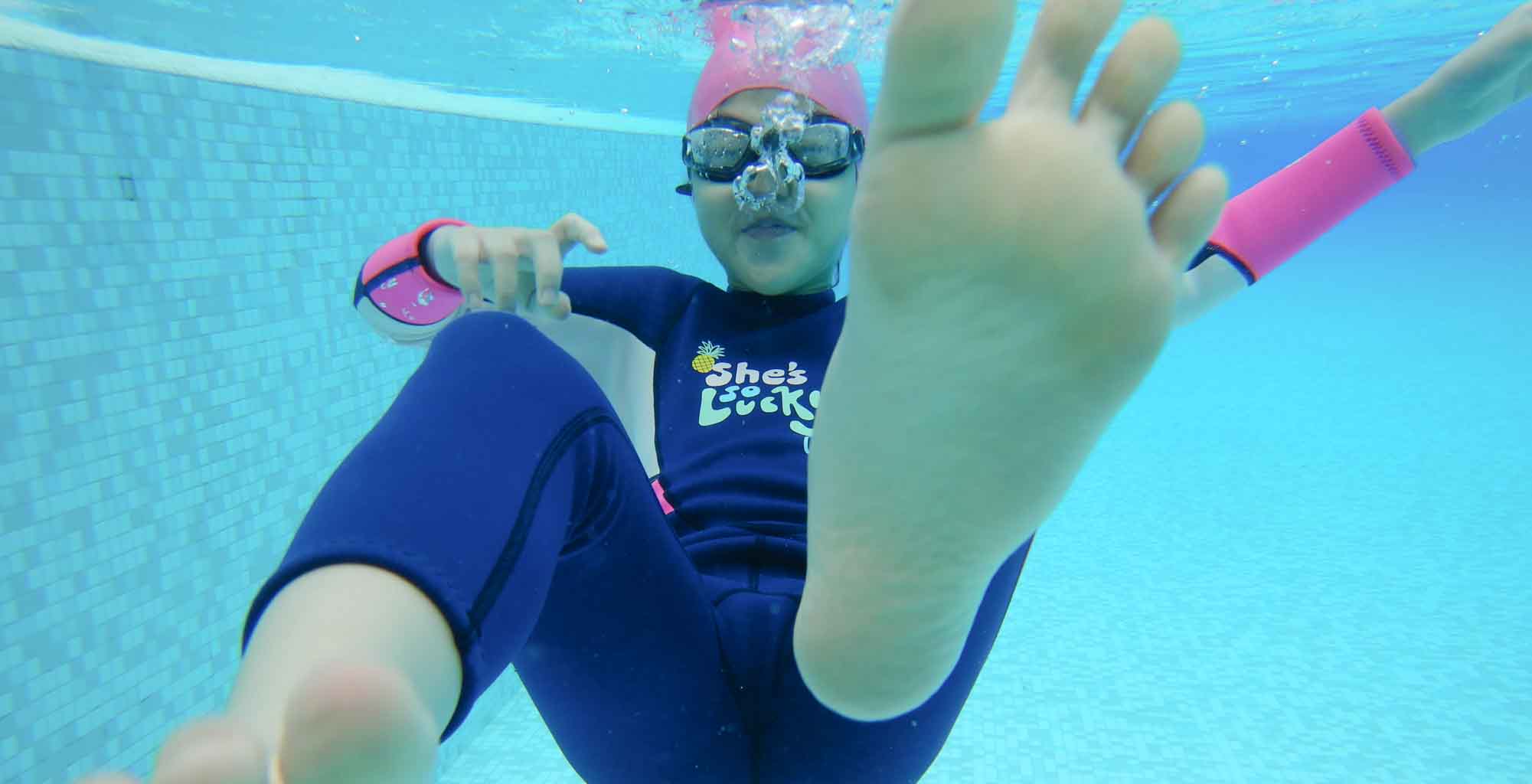Learn How To Swim Butterfly Stroke

The “Fly” Stroke History
The Butterfly Strike is a new stroke developed between 1920 and 1953. Over the years, the strokes have flattened rather than the 1970s ups and downs.
The butterfly swim itself looks like a breaststroke. It is not a stroke invented by a single person.
A handful of swimmers all tried to relax out of the water but achieved that with a breaststroke.
This is the second-fastest turn commonly used in swimming competitions, following the crawl. The butterfly stroke is a more advanced stroke evolution from breaststroke. It contains the same simultaneous leg action and simultaneous arm action similar to breaststroke.
These strokes are usually swum competitively and not for recreational use. It requires a great deal of upper body strength and is physically demanding.
The undulating action of the body and the legs will create a great demand for the spine. Various exercises and exercises are used to make the butterflies lighter and more physical.
The Butterfly is a new style of swimming developed between 1920 and 1953. The first competition with the butterfly stroke in 1933 produced most of the coordination, movement, behavior, and pace from the breaststroke.
The gentle wave movements of the core Muscle are the heart of a relaxed and efficient butterfly swim. The stroke itself has many similarities to breaststroke. One did not invent it. A handful of swimmers all tried to relax from the water but succeeded in breaststroke.
This is the second-fastest turn commonly used in swimming competitions, following the crawl. However, the maximum speed of the Butterfly is faster than Freestyle, mainly by pulling synchronously, and faster to push with both arms and legs.
Overall slower than Freestyle due to a significant slowdown during the recovery phase. And the extreme physical exercise required of swimmers compared to Freestyle. It usually burns the puncher’s energy faster. The
Butterfly Rain is a more advanced stroke that evolved from breaststroke. “Flying” is an advanced stroke that requires good skill and strong muscles, as opposed to other strokes such as backstroke, crawl, and breaststroke.
Similar to breaststroke, it includes the same leg movements and simultaneous arm movements. These strokes are usually for competition, not for entertainment. It requires a lot of upper body strength and is very physically demanding.
The undulating movements of the body and legs put a heavy strain on the spine. Various exercises and exercises are used to make butterflies easier and more physical.
If you need stroke corrections and want to swim more efficiently with “fly” swimming, check out the swimming courses with swimming corrections.

Butterfly Stroke Swimming Body Position
“Pulsing” practice is usually the first practice for beginners to pick up butterfly swimming stroke. This exercise is focused on swimming and undulation of your body without kicking.
Start with positioning your body streamline, horizontal on the water surface. Keep your head in alignment with your neck and spine.
Always keep your eyes at the bottom of the swimming pool, and imagine your neck as long and as straight.
Some of the pointers to take note for butterfly stroke swimming:
- The body moves in a wave-like motion in the water; Pulsing practice
- The hips will move up and down in undulating movement.
- There is a continuous undulating action during butterfly; thus, the body position varies throughout the stroke. The body will undulate from head to toe, producing a dolphin-type action.
- The body is in a prone face down position with the crown of the head leading the whole undulating action.
- Make sure to have your shoulders remaining level throughout the stroke.
- The head should remain at all times central, still and looking down until breathing is required.
- Hips have to be positioned inline with the shoulders, remaining parallel to the direction of the travel.
Butterfly Leg Action
- The simultaneous leg kick action from the butterfly stroke comes from the knee. The leg accelerates in a downbeat to provide the propulsion of the butterfly.
- The legs kick simultaneously with the action and application of pressure in water the same as the front crawl. The differences between flutter kick and dolphin kick are usually more powerful, happening simultaneously and a noticeable knee bend.
- The upbeat action of the kick should come from the hip.
- Toes are relaxed, and the ankle is pointing straight.
- Knees bend and straighten on the downbeat to provide propulsion.
- Legs accelerate to provide the power on the downbeat.

Butterfly Stroke – Arm Action
Arm action is a continuous simultaneous movement that requires upper body strength. The arm action is similar to the front crawl and the underwater catch, down sweep, and upsweep part draws the shape of a ‘keyhole’ through the path of its movement.
Keeping the rhythm of arm movement and core movement is essential to relax and sustain the butterfly stroke. This section explores the mechanism of butterfly arm movement by examining the complete stroke cycle, which begins and ends shortly after the hand enters the water at the top of the stroke.
This progression allows you to focus on one stroke cycle at a time and then gradually swim the entire stroke. At the beginning of the
stroke cycle, the hands, and arms are submerged, the chest is pushed down, the hips are on the water’s surface, and the feet finish the kick stroke.
The hands spread naturally, moving the arms to the Y position just behind the shoulders. This stage of the stroke feels like you’re leaning against your chest, grabbing the high side of the open door. It doesn’t stop, but if you’re out of the swing of the previous shot cycle and preparing for the next shot, you may feel like you’re stopped at this stage.
Novice butterfly swimmers often make mistakes by rushing or omitting this significant body stretch, chest compressions, and momentary pauses. This flaw makes it challenging to achieve rhythmic, flowing beats. The proper catch will prepare the swimmer for a more robust and efficient butterfly than any stroke.
Like freestyle swimmers, butterfly swimmers maintain high elbow positions while pushing their fingertips, hands, and forearms slightly outwards, effectively grabbing water to draw water.
The position of the hand at the widest point of the catch phase is often referred to as the corner. In the underwater phase of the stroke, the swimmer pulls his arms out of the corners under the body while maintaining a high elbow position.
From there, they slide their arms back to the end of the punch. When switching between pulling and pushing, the swimmer holds both hands just in front of the abdomen, about the hand’s width. During the underwater phase of the stroke, the chest moves from the lowest point of wave movement to the highest point just above the waterline.
The intense pressure to the end of the stroke requires the hand to rise to maximum speed. This hand and forearm acceleration from a slow catch to a fast target provide full power and buoyancy when transitioning to recovery.
As the chest moves up over the water and the hands accelerate during the compression phase of the stroke, it inhales rapidly in the breathing cycle.
The remaining arms of the butterfly are wide. The arms are straight and relaxed, along with the shoulder blades, the little finger pointing up, and the back of the hand facing forward. During recovery, your arms should be just above the surface of the water.
Imagine making a snow angel and resisting the temptation to bend your elbows like a freestyle. Instead, keep your elbows straight while your fingertips draw large semicircles on both sides. At this stage of the shot, relaxation is essential to advance the power burst to ensure a good swimming speed.
Imagine throwing your arm forward as your chest moves across the water. Arms, chest, and head should reach the front of the shot and the surface of the water simultaneously. A critical factor in maintaining the rhythm of the butterfly stroke is a quick and clean connection between the underwater phase and low surface recovery.
New butterfly swimmers can get stuck at the rear end of the stroke, making it challenging to start recovery. To avoid this, end the pull just before the elbow is fully extended. The elbow advances as the arms exit the water, followed by the forearm and hand. The back of your hand should always be facing forward.
Entry
- The hand entry into the water should be fingertips first with the thumb leading.
- Fingers should be close up together with the palms flat facing outwards
- Arms should stretch forward with a slightly bent elbow.
- The arms should look like a “T” shape with your body, and arms extended inline to your shoulders.
Catch and Down Sweep Action
- The pitch of the down sweep then changes to a deeper angle with the hands almost vertical in the water.
- The catching and down sweep action should begin just outside the shoulder line.
- Palms remain facing in the direction of the travel.
- Elbow should bend to 90 degrees to provide the extra power required in this stroke.
- The hands do the sweeping action in a circular motion identical to breaststroke but in a downwards path.
Upsweep
- Pitching of the hand changes to face out and upwards towards the water surface.
- Elbows will extend fully to straighten the arms and hands away from the thigh.
Recovery
- The hands and arms in the butterfly stroke should clear the water on recovery to increase efficiency and abide by ASA’s competition laws.
- Arms and shoulders will exit the water fully with little fingers leading facing upwards.
- Arms must clear the surface when they are “thrown” over and front.
- Palms will remain facing outwards, naturally giving a thumb-first entry.
- The hand entry into the water should be fingertips first with the thumb leading.
- Fingers should be close up together with the palms flat facing outwards
- Arms should stretch forward with a slightly bent elbow.
- The arms should look like a “T” shape with your body, and arms extended inline to your shoulders.
Breathing
As with all movements, butterfly inhalation must be synchronized with the rhythm of the movement.
Inhale when your chest is at the top of the wave action and keep an eye on the water; imagine a long, wrinkle-free neck when you inhale.
Keep your neck long and straight, leading to the top of your head. Exhale slowly as you push your chest and lungs back below the surface. Accelerate the airflow and blow off the rest with the last puff. Then inhale as your chest returns. It relaxes the muscles of the face and chin, concentrates on inhaling and exhaling, and maintains a stable and stimulating rhythm.
Start pedaling by putting your arm aside and inhaling, time your foot every four beats. Next, stretch your arms and kick in front of you.
Again, breathe every four times.
Minimize interruptions in the wave flow by pushing your chest into the water, inhaling quickly, and exhaling slowly.
As described below, all swimmers improve their core strength with a butterfly kick drill, whether practicing on the back, underwater, horizontal or vertical.
In addition, the Dolphin Kick was recently introduced into the underwater pullout with breaststroke, freestyle and backstroke starts, and spins, allowing it to be legally used on any stroke of the Masters’ competition.
- The inhalation process for butterfly stroke swimming takes place when the arms complete the upsweep and begin to recover. This is when the body starts to rise.
- The head is lifted, the chin pushes forward, and still remains at the water surface.
- The head is then pushed forward, lowered into the water quickly as the arms recover in line with the shoulders.
- Explosive breathing is usually preferred, but a combination of trickle together with explosive breathing can be used.
Timing
- One stroke cycle should contain two leg kicks and one arm cycle.
- The first downbeat of the kicks should occur at the catch and down sweep phase.
- The downbeat of the second leg kick occurs during the upsweep phase of the arms cycle.
- Breathing can occur on every stroke cycle or every two-stroke cycle, depending on your comfort level.
- One stroke cycle should contain two leg kicks and one arm cycle.
- The first downbeat of the kicks should occur at the catch and down sweep phase.
- The downbeat of the second leg kick occurs during the upsweep phase of the arms cycle.
- Breathing can occur on every stroke cycle or every two-stroke cycle, depending on your comfort level.
Butterfly Drills
All butterfly swimmers, regardless of experience, can use the below skill development and subsequent drills to see basics such as body position, stroke timing, rhythm, flow, and kick.
Only one arm
Set one arm aside, swim the butterfly with the other arm, and blow on the side of the stroking arm. This is a good exercise to enhance the rhythm of the punch and the timing of the two kicks.
When you put your arm back, imagine rolling it a little sideways and drawing the widest possible arc with your arm. This helps keep your arms straight while you are recovering. This excellent drill is also suitable for connecting the underwater phase of the stroke to recovery. Accelerate the movement from the last press to recovery without slowing down.
Single, Double, Single
This popular exercise that supports rhythm and timing starts with a streamlined kick from the wall. With your right arm extended forward, swim the pull cycle with your left arm alone, then stroke your right arm for another cycle with your left arm extended, and finally swim with your arms. You can repeat or modify this pattern to perform a sequence of two right arm cycles, two left-arm cycles, and two full stroke cycles.
As you progress, you can increase this sequence to three or more sets.
Dolphin Kick Underwater
This kick exercise can be performed with both hands lying down or with the arms above the head in a streamlined position. Focus on moving the flow of energy through your hips and legs, moving your abdominal and hip muscles, and snapping your legs at the end of the move.
Successful underwater dolphin kickers move their chest and arms very little up and down.
Dolphin Back Kick
Lying on your back, keeping your hands sideways, and strengthening your abdominal muscles keep your head away from the water during this excellent exercise.
Focus on kicking and snapping your feet just below the surface of the water. Try creating a little splash. Use your hands to gently peel off your hands.
Butterfly Stroke Simple Practice Drills
Butterfly Body Position Drills
- Poolside holding the static drill
- Diving dolphin in a shallow pool
- Gliding and pushing like a dolphin
<strong>Butterfly Leg Action Drills</strong>
- Poolside sitting kicking drill
- Push off glide with an added dolphin leg kick
- Prone position holding float with both hands
- Prone position holding a noodle with both hands
- Supine position, hands by the side with dolphin leg kicks drill
- Kicking and rolling with dolphin kick drills
Butterfly Arm Action Drills
- Poolside standing and land butterfly arm drills
- Walk across the pool floor arm drill in shallow water
- Pushing and gliding with arms drill
- Isolation arm drills with pull buoys
- Butterfly arm actions with breaststroke kicks
Butterfly Breathing Drills
- Stand, breathee with arm pulls
- Full stroke drill
Butterfly Timing
- Full stroke


